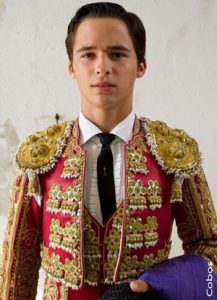The Bulls in Tijuana and the World
The 3rd so-called “Corrida de Oportunidad” will take place at Tijuana’s Plaza Monumental de Playas this Sunday, August 16, beginning at 4:30 p.m., and three basic questions confront the reporter/casual observer/unconditional supporter of the taurine arts:
- Who are, in no particular order, are Cesar Ibelles and Xavier Ocampo?
- How will the participants for the fourth corrida of the Temporada, the so-called “Corrida de Triunfadores” be determined?
- Will the cumulative time required by the mule team to remove the dead bulls from the arena exceed the total time allotted for the corrida itself?
In somewhat more seriousness, the first two of the admittedly risky cartels proposed
Casa Toreros to promote some of the more promising but lesser known matadores in the Mexican firmament have produced only middling results—and very skinny box offices. Ricardo Frausto, to no one’s genuine surprise, is the only torero to cut two ears so far, but Oliver Godoy and Gerardo Adame have cut (somewhat generous) ears in their respective appearances, and Juan Luis Silis has offered, without question, the most serious, luminous and “deep” work of the two dates. Silis, however, was also gored and had his right femur broken by his bull, and will not be able to perform for 6-8 weeks. The other participants—and the bulls from the “El Vergel” and “La Joy” ranches—have been only fair to slightly above average. What, then, to expect in this last competition?
Ocampo, from Guadalajara, has labored in almost complete anonymity since his alternativa in Calatrava, Spain, in 2004. Important performances—and horn wounds—have marked his peripatetic career, and he comes, as have several of his predecessors, looking for a last chance to salvage something of merit.
Cesar Ibelles, from Mexico City, began strongly as a novillero performing in nearly 60 novilladas in important plazas such as Guadalajara, Monterrey, Aguascalientes, and has made progress toward confirming the alternativa this winter in the Temporada Grande in Mexico City. He, indeed, has something of a career to entertain and, like other of the younger members of the summer of opportunity, stands to benefit from a good showing in Tijuana.
Antonio Romero, from the historically taurine state of Zacatecas, is one of the strongest contenders to move on to the corrida de triunfadores. His sporadic career has managed to generate nearly unanimously positive regard for his technical ability and artistry, but his luck in the drawing his bulls has been poor on important dates; he was most recently training on several Spanish ranches in the Andalucian area.

Juan Pablo Llaguno and Antonio Lomelin both enjoy—if that’s the correct word—the connections and recognition of famous relatives that have facilitated their entry into the profession.
Llaguno is the great-grandson of Antonio Llaguno, one of Mexico’s two most famous and influential ganaderos. His lifelong association with both the fighting bull and the taurine ambiente have lent him an unusually precocious facility in the ring, though it has not been supported by major achievements following important showings in La Maestranza in Sevilla, and other Spanish plazas. He took his alternativa in Queretaro in 2014, and has battled to keep in circulation since.
Lomelin, son and inheritor of his father, Antonio Lomelin’s leonine good looks, has played those physical similarities into a semblance of a career. A total of 48 novilladas, in both Spain and Mexico, preceded an almost private ceremony alternativa in Morelia on May 1st of this year. He, too, is running up against the harsh reality confronting those “hijos de papa” who understood and capitalized on the benefits of “royal” lineage, but, perhaps, are not so prepared to assume the risks. He has had the support—one supposes moral and economic—of the master Spanish rejoneador Pablo Hermoso de Mendoza, with whom he has performed on the somewhat suspicious “mixed” cartels that protect the young from the relative ignominy of the typical novillada cartel, but now must proceed in direct competition with full matadors and without the cover of his famous and beloved mentor. He has shown some of his father’s renowned bravery before the horns, but little else.
Angelino de Arriaga, another young torero with family precedents in the art, is probably the other best bet for the afternoon. Arriaga, from the taurine stronghold state of Tlaxcala, has had important performances in the rings of central Mexico and Yucatan, and, three years ago presided over the (questionable) pardoning of the life of the bull “Gondolero” of the Jorge Maria ranch in the 10th corrida of the Temporada Grande in Mexico City. He has a reputation as an “artiste” of temperament and inspiration, but, like most of the new crop of matadors and novilleros in Mexico, his technique is solidly based around his wide experience in his native state and the formal education received in different taurine schools in Mexico and Spain.
The weather promises more than adequate sun, children under 12 are free with a parent, “El Vergel” sent a solid sextet in July, and the time is right for a legitimate triumph.






